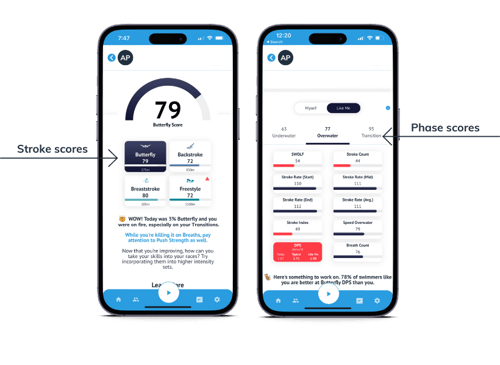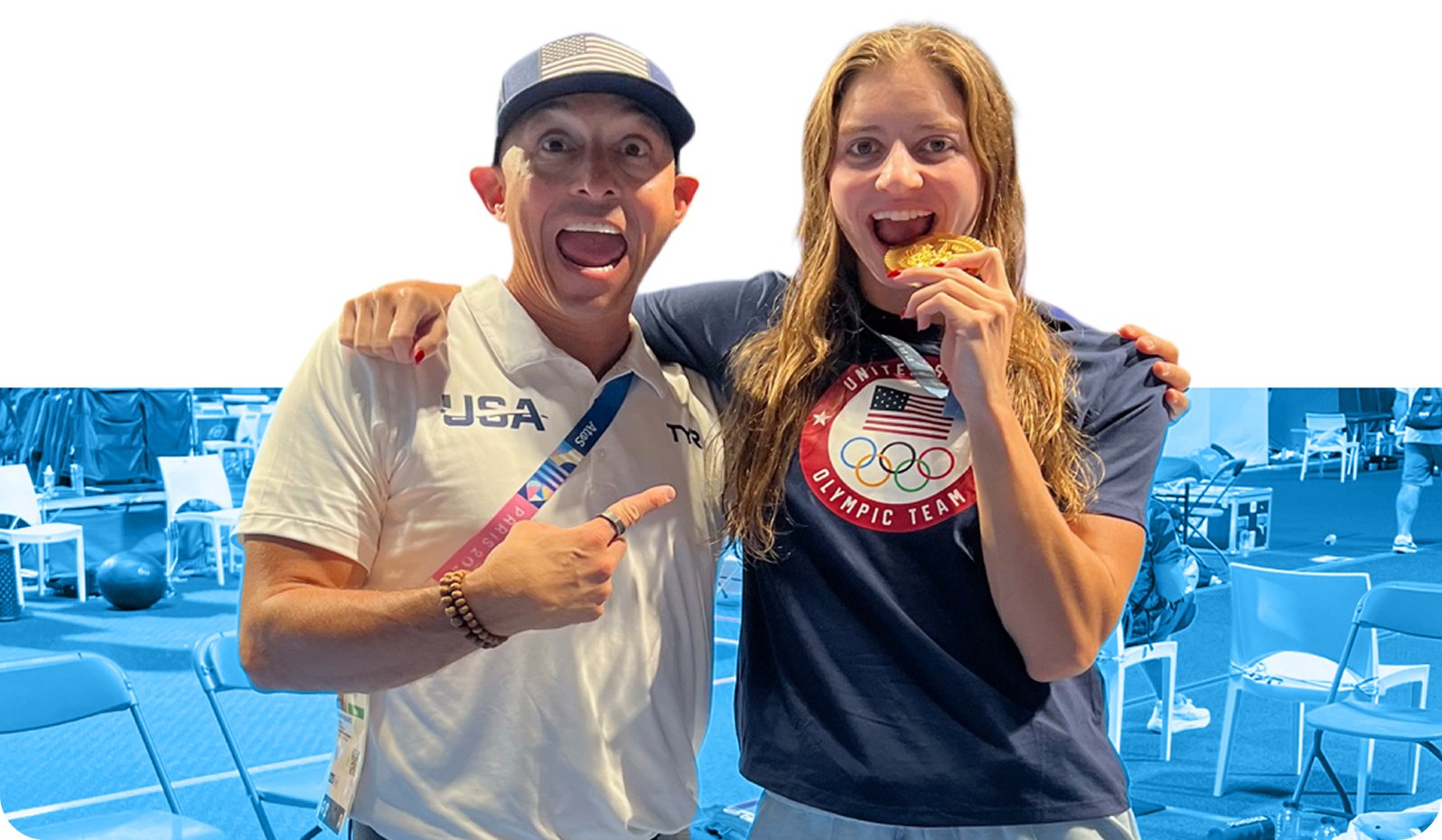When it comes to swimming performance, tracking metrics can provide swimmers and coaches with invaluable insights into how to optimize their training and reach their goals. TritonWear offers more than 30 focus metrics that measure specific swimming phases, from transition to overwater strokes. While each metric is helpful on its own, combining them can offer swimmers and coaches an unparalleled level of detail and control over their training.
However, with so many different metrics to choose from, how can swimmers and coaches know what to focus on? This blog post offers three important steps to help swimmers choose what metrics to prioritize and how to use them to maximize their performance. From understanding the Triton Score to diving deeper into specific focus metrics, these steps offer a practical guide for any swimmer looking to improve their skills and achieve their goals.
How to choose what to focus on?
1. Get to know the Triton Score
To make the most of TritonWear metrics, it's important to spend time getting to know the Triton Score and how it reflects different focus metrics. Once you're familiar with the Triton Score, the next step is to identify your biggest weakness and how it affects your overall performance. Based on your analysis, you can set goals for improvement and identify the focus metrics that can help you achieve them.
To streamline your access to metrics, you can select up to six favourite metrics for easy reference. Then, as you track your progress over time, make sure to monitor your focus comparisons to see how you're performing relative to your goals. By embracing these strategies and focusing on the right metrics, you can maximize your training and improve your swimming performance over time.
2. Understand Focus Comparisons
Focus comparisons measure your most recent activity against your previous bests or athletes like you. When you are looking at compare to ‘’my average,’’ you’ll see how you rank in each specific metric. Are you improving more than what your profile is for each metric?
Adversely, when you look at comparing to swimmers ‘’like me’’, you’ll see how you rank in each specific metric compared to other swimmers in your height and speed. Identifying the strengths and weaknesses of swimmers like you will offer you high-value intel you can use to maximize your performance.
Remember that elite swimmers don’t necessarily rank the highest in individual metrics; instead, they have the best combination of metrics. For example, the fastest swimmers will not have the highest value on stroke rate alone. They will have the highest stroke rate relative to their DPS.
3. Dig deeper into the Focus metrics

Stroke Rate, Distance Per Stroke & Stroke Index
When trying to swim faster, the first thing to consider is that Stroke Rate and Distance Per Stroke are intertwined. Both metrics influence each other during your swim. For example, as you increase your Stroke Rate, you will also increase your Distance Per Stroke. When you continue to increase your Stroke Rate, you’ll find a point past which your strokes will start to become inefficient. Essentially you will be spinning your arms without getting much water with each stroke.
Maintaining a consistent Stroke Rate is crucial for mid-and long-distance swims. A super high Stroke Rate might be difficult to sustain throughout the distance. A swimmer’s optimal stroke rate is the one they can maintain throughout the entire length without compromising stroke efficiency.
The ideal SR for a given swimmer depends on many variables, including the event distance, stroke, speed, and swimmer height.
Stroke Index measures a swimmer’s stroke efficiency by considering the Distance Per Cycle and Average Speed per lap. It favours a higher distance per stroke at the same Stroke Rate. The Stroke Index will rise much faster by increasing Distance Per Stroke than it would by increasing your Stroke Rate.
This metric’s goal is a higher number: a higher stroke index = higher stroke efficiency. The goal is a high stroke index and a consistent stroke index for distance events.
Turn Time & Push Strength
Swimming turns play a crucial part in race performance. The Turn Time metric measures the amount of time between the initiation and end of a turn. It is an essential metric to track to improve your overall time.
The first few meters after the wall is the fastest part of your swim. A fast turn time paired with an explosive push-off will get you leading the lane. For an explosive push-off, the goal is to minimize Push Time and maximize Push Strength.
Push Strength is a measure of total acceleration the moment the feet leave the wall. Gravity, type of turn and quality of streamline can all impact your push strength. The higher the push-off strength, the more momentum the swimmer will carry off the wall and into their underwater phase.
Time Underwater & Speed Underwater
One of the highest speeds in a race is off the turn. The streamline helps carry that high Speed Underwater for as long as possible. Improving the underwater phase of a swim is crucial to swimming faster, especially considering that underwater kicking is the fastest stroke. Maximizing Time Underwater is about going further faster.
One thing to be careful of during the underwater dolphin kick is overbending the knees. A kick generated by bending the knees too much creates more drag and negatively impacts speed underwater. Instead, focus on starting the kick from the hips. Kicking from the hips is both faster and more powerful.
Next, learn how to prioritize your goals based on your focus patterns.





.png)
.png)